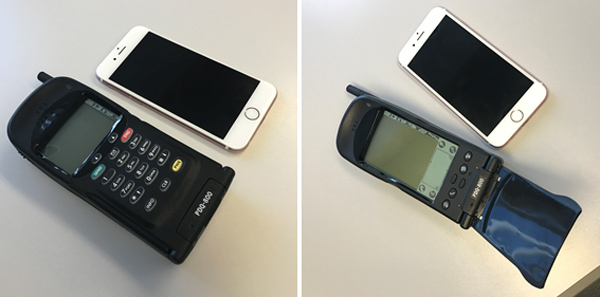In recent years, the word "IP" has entered the public's field of vision as a fashionable concept. The hit TV series is called "IP drama." "IP" is an abbreviation of Intellectual Property, which is intellectual property. It does not only refer to literary and dramatic works, but also includes the rights of all intellectual workers to their creative achievements. The popularity of this concept is undoubtedly a good thing. For example, the growing skepticism and criticism of "plagiarism" in various industries is, to a certain extent, a deeper expression of IP awareness than ever before.
In 2005, China initiated a series of normative measures for intellectual property rights. There are still many areas that are still not perfect. In the West, the concept of intellectual property was born from the beginning of the first industrial revolution. In developed countries, many companies see intellectual property as an important part of their business. The Qualcomm company in the United States is an example.
When it comes to Qualcomm, many people are not unfamiliar because Qualcomm's OpteronTM processors are used in many Chinese high-end smartphones. It can be said that Qualcomm's technology is the "standard" for smart phones, because now all smart phones will use the company's technology. Although Qualcomm now focuses on processors and related communication technologies, most people do not know that Qualcomm actually did mobile phones in the beginning.
Give up the production of mobile phones for the overall development of the mobile phone market

In the early days of wireless communications, Qualcomm also produced mobile phones. “But with the power of one company to go it alone, the number of handsets we can produce and sell is limited. If Qualcomm licenses handset-related technology to other handset vendors, the entire industry can flourish and sell more.†Many and better products,†said Roger Martin, senior vice president and chief intellectual property strategist at Qualcomm. “If we want the wireless communications market to develop rapidly, we must license technology to more handset manufacturers to use them. As a result, Qualcomm withdrew from the mobile phone production market at the end of 1999 and turned itself into a semiconductor company integrating technology research and development, licensing, and chip sales.

Qualcomm Senior Vice President and Chief Intellectual Property Strategist Roger Martin
Dr. Paul E. Jacobs, former CEO of Qualcomm and currently serving as chairman of the board, foresaw for a long time that mobile phones and handheld computers with communication capabilities would one day be merged. In 2000, Paul Jacobs found two computer companies to talk about their own ideas, one of which is now the famous Apple. But at that time, Apple refused the attempt, so Qualcomm and another company called Palm Computing co-designed a smartphone called PDQ.

It has a touch screen, virtual keyboard, stylus and other devices that can achieve wireless networking, download APP and other functions. Qualcomm even invented the world's leading application software store (BREW) that can download APP. In a sense, PDQ is the world's leading CDMA smartphone.
Invisible trial-and-error costs and risk cycles
The goal is good, but the process is also extremely difficult. In order to persuade mobile phone manufacturers to use their own technology, Qualcomm must be technologically advanced. Therefore, it has invested a great deal of time, manpower, and material resources in research and development. Since its inception in 1985, Qualcomm has spent a total of 43 billion U.S. dollars in research and development, and this number is still growing every year.
Qualcomm has a "patent wall," which records all the tens of thousands of patented projects the company has, whether it is Qualcomm's best-in-class wireless communications technology, or the essential GPS positioning and flight modes of today's mobile phones. among them. But behind these achievements, what we cannot see is a lot of trials and failures. Of every 20 inventions invented, there is only one final value that can be used as expected. As Roger Martin said: "The invention is essentially a process of large-scale trial and error."
The risk is not only reflected in the trial and error of the invention, but also more obvious in the market test. In 1987, Qualcomm began to invest heavily in R&D of 2G. However, until the year of 1995, 2G R&D was accepted, but it has not yet been used on commercial phones. In fact, most of Qualcomm's technologies can only be devoted to investing for a long period of time. The returns usually start gradually after 6-8 years. “How to ensure the return in this process? The only basis is to establish a sound and predictable intellectual property protection process. If you leave the protection of intellectual property, the industry chain itself does not exist, it is impossible to operate normally.†Senior Vice President of Qualcomm Chen Liren, engineering and legal advisor, said: "Qualcomm has always been committed to maintaining its leading position in the industry, that is to say, it must be invested in advance. The most basic input is high-risk investment." Today, our mobile phones have used 4G. Network, but back in 2006, Qualcomm has already begun to invest heavily in the research and development of 5G technology.
There are numerous examples of such cases. In the past 20 years, the average compound annual growth rate of Qualcomm's patent pool is more than 30%. As a user, we can't just see Qualcomm charging for patented technology licensing fees, but we ignore the tremendous driving effect of its technology on the entire industry, let alone the huge sunk costs behind the technology and the enormous risks posed as an industry leader.
More crucially, Qualcomm's level, integrity, and open licensing model have promoted the development of the entire wireless communications industry, promoted competition, and ultimately benefited consumers and the market. 20 years ago, the mobile phone was still a game between several foreign giants, but now to look at the performance of Chinese mobile phone manufacturers in domestic and foreign markets, it seems that the world market is only: Apple, Samsung, China's three mobile phone manufacturers dominate, and China mobile phone The rising trend of manufacturers is still strong. The mobile phone has also become a "computer" that can be afforded by almost everybody now and can't escape from the expensive and symbolic Big Brother. (The mobile phone has now become a tool for many people to first contact the Internet.) The industry’s tariff levels have also dropped substantially as a whole. This point is particularly worth thinking about Chinese companies.

Since entering the Chinese market for 21 years, Qualcomm has actively invested important R&D forces in China and has participated in the leaps and bounds of the development of China's communications industry. Since 2003, Qualcomm has funded Chinese startups that are engaged in the development of mobile technology products, applications and services with venture capital. At present, Qualcomm has invested more than 20 companies in China.
Indeed, from the backwardness of China’s information industry in the “Information Age†to the present, the domestic mobile phone industry has achieved a qualitative leap. Today, China already has more than 110 own mobile phone industry companies, and there will be more in the future. Data from IC Insights shows that among the top 12 smartphone manufacturers in the world, Chinese mobile phone manufacturers have occupied 8 seats and have reached a leading position. In addition to manufacturing, Chinese companies are also trying hard to get rid of the label of Shanzhai. More and more people are aware of the importance of intellectual property. Take ZTE Corporation as an example. In the past six years, ZTE's R&D investment has exceeded 50 billion yuan. In 2015 alone, R&D investment exceeded 10 billion yuan. R&D investment ranks top 3 in domestic companies and 80 in global listed companies. Currently, there are more than 66,000 pieces of global patent assets, and more than 24,000 patents have been granted, of which more than 90% are invention patents, including many basic patents covering international communication technology standards such as 5G/4G, cloud computing, and big data, as well as coverage communications. Core patents for key technologies in the industry. Its strong research and development capabilities and technological innovation have also brought more benefits and reputation.
In fact, people in China never lack creativity. With the improvement of the domestic intellectual property system, more people's inventions and creations will be protected. We believe that in the near future, we will have more confidence and confidence in "China's intellectual creation."
Fiber Fast Connector,Fiber Quick Connector,Fast Connect Fiber Connectors,Fiber Optic Quick Connector
Ningbo Fengwei Communication Technology Co., Ltd , https://www.fengweifiberoptic.com